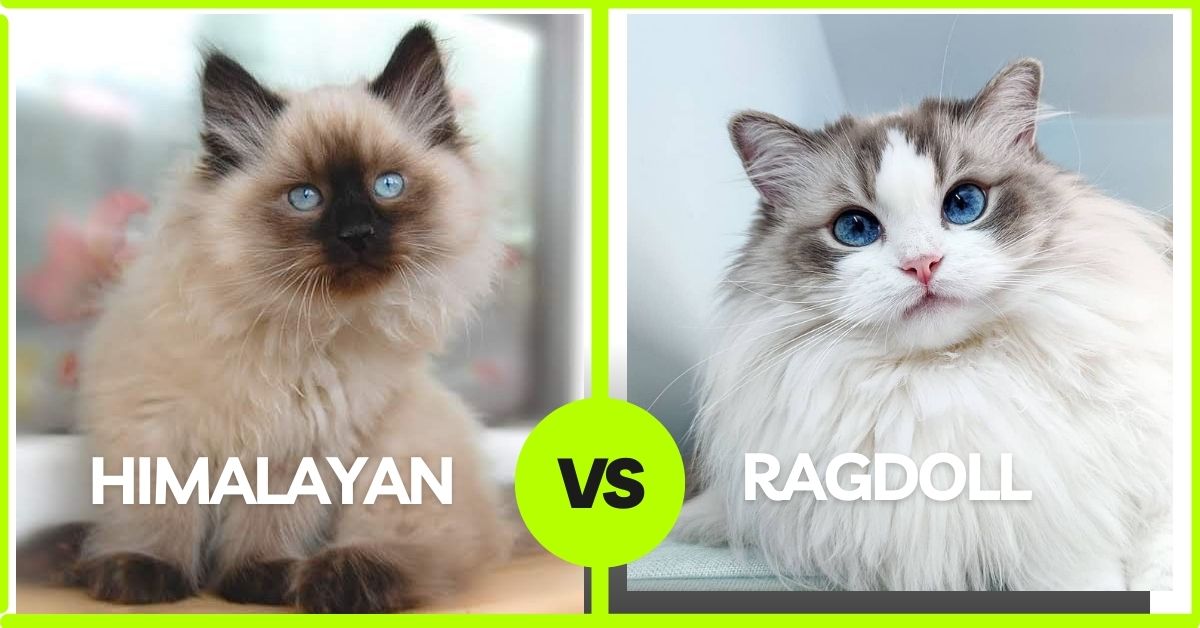If you are looking for a calm, gentle, and soft-coated, then Himalayan vs Ragdoll cat may be a topic for you to consider. Both these are popular all over the world. Their calm temperament and beautiful blue eyes are a source of attraction. You will be able to decide which cat you should choose between a Ragdoll vs Himalayan cat. This article covers the behavior, care, price, and pros/cons of both fur balls.
what is the difference between Himalayan and ragdoll cats?
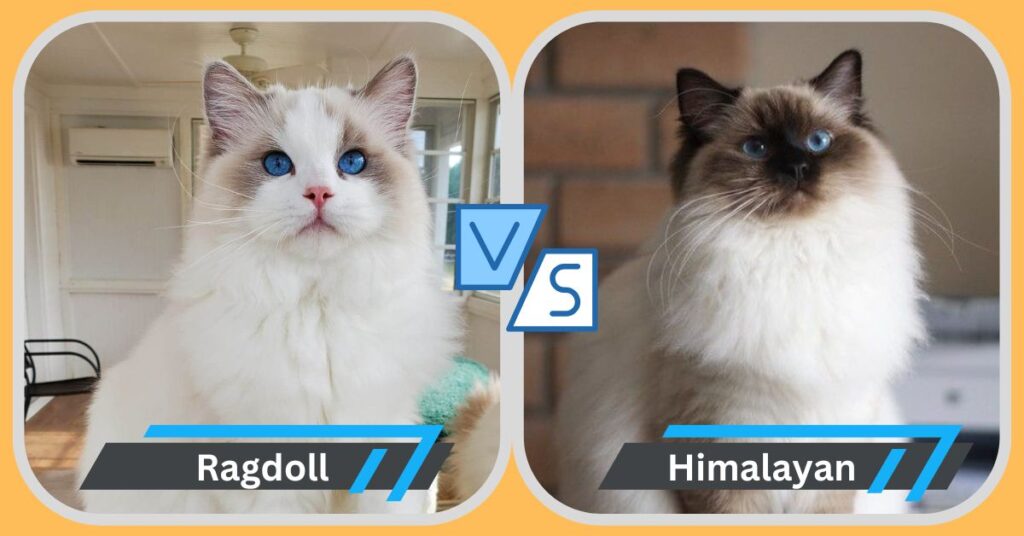
If we compare the Himalayan vs ragdoll cats, they are very similar in color and structure. Due to similarities in personality and behavior, it can be difficult to identify which is a Ragdoll cat and which is a Himalayan cat. But don’t worry—after reading this article completely, your confusion will be cleared, and you will be able to identify the difference between a Ragdoll cat and a Himalayan cat.
Himalayan vs ragdoll cat at a glance

Ragdoll
Weight: 7-9 kg
Length: 18-22 inches
Eyes color: Blue
ragdoll cat lifespan: up to 18 Years

Himalayan
Weight: 4-5 kg
Length: 17-19 inches
Eyes color: Blue
Himalayan cat lifespan: up to 15 Years
Ragdoll Characteristics
Ragdolls have a relaxed and friendly personality. They are very playful and understand human emotions very well. They are big cotton balls in size and look soft and love to cuddle. This breed is incredibly social, which makes it an ideal pet. It is a muscular cat with a soft and silky coat that sheds less than other long-haired cats. Thankfully they do not have an undercoat which results in less shedding and less grooming requirement than Himalayan and Persian cats.
- It got the name “Ragdoll” due to its tendency to become a limb when lifted.
- Ragdoll cats are often described as a dog-like breed because of their loyal and easygoing behavior.
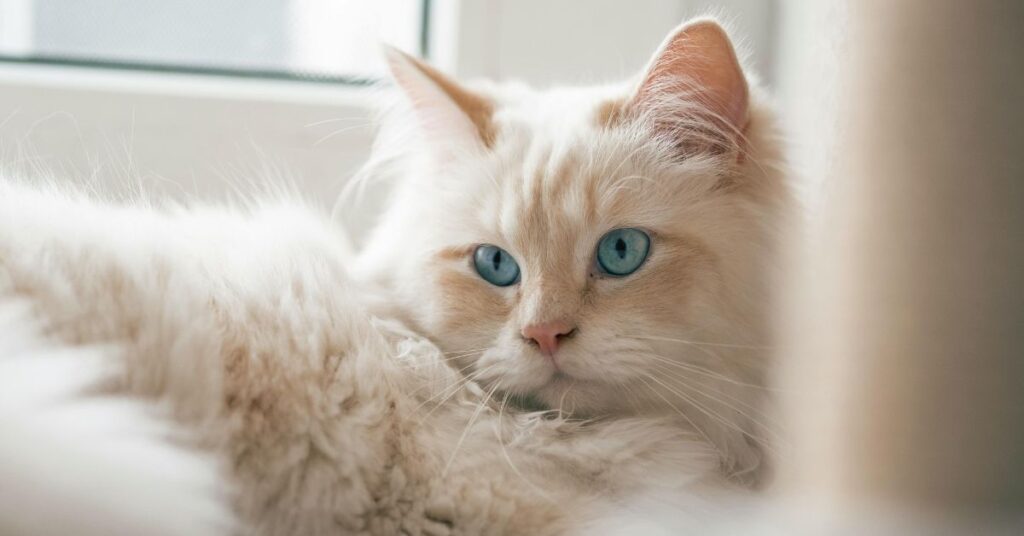
Colours found in Ragdoll cats:
- Red
- Lilac
- Seal
- Blue
- Chocolate
- Cream
Ragdoll Cat Origin and History
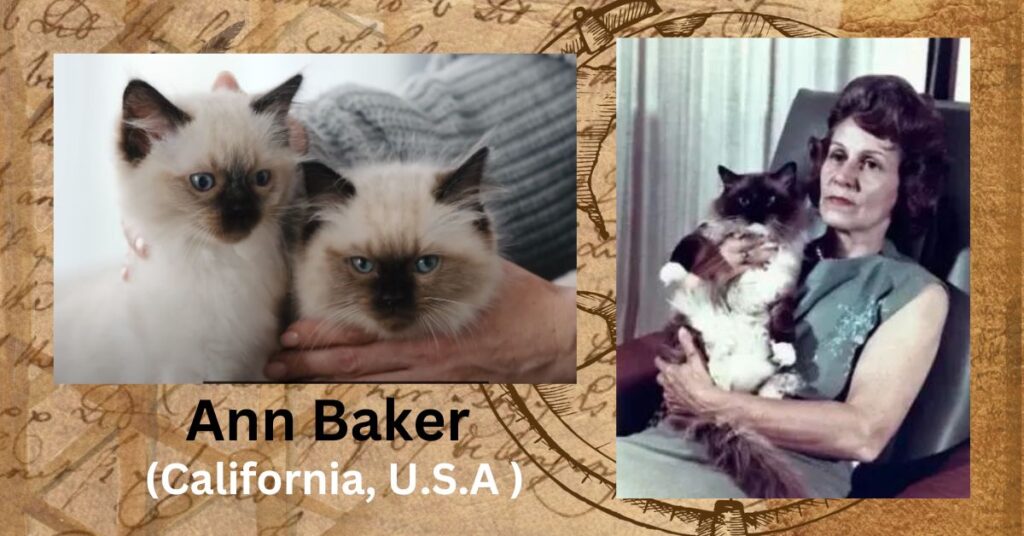
The attractive and loved breed of Ragdoll is now with us thanks to Ann Baker of Riverside, California. In the 1960s, she bred a long-haired white cat named Josephine with another cat, which later led to the origin of the Ragdoll.
Ann founded the International Ragdoll Cat Association in 1975 and registered the trademark for the name Ragdoll. Ann passed away in 1997, after which most of the breeders of this group joined other groups. Today, the Ragdoll Fanciers’ Club is the largest organization of this breed.
Pros and Cons of Ragdoll cat
pros
1. Gentle and calm temperament
2. Highly intelligent
3. Easy to train
4. Less grooming required
5. Relaxed and friendly with other pets
Cons
1. Risk of many diseases like HCM
2. Higher chances of becoming obese
3. Not meant for outdoors
4. Little vocal
5. Can’t stand loneliness
ragdoll cat breed price
Professional and experienced breeders breed Ragdolls, so the price of the cat can be high. Ragdoll cat price in India is Rs 30,000 to Rs 55,000 ($400 to $1000). The price can vary depending on many factors such as age, gender, color, and from which breeder you are buying the cat. Ragdoll price in India also depends on the pedigree and bloodline of the kitten.
Ragdoll Suitable For:
Ragdolls are very intelligent, so due to their quick learning, they adjust anywhere very quickly. They are comfortable with humans of all ages. If you have many children and other pets in your house, Ragdoll remains very relaxed with everyone. Apart from this, if your house is very calm and there are elderly people, then it adapts to that environment. Due to their friendly and calm nature, they enjoy the company of humans a lot.
Himalayan cat overview
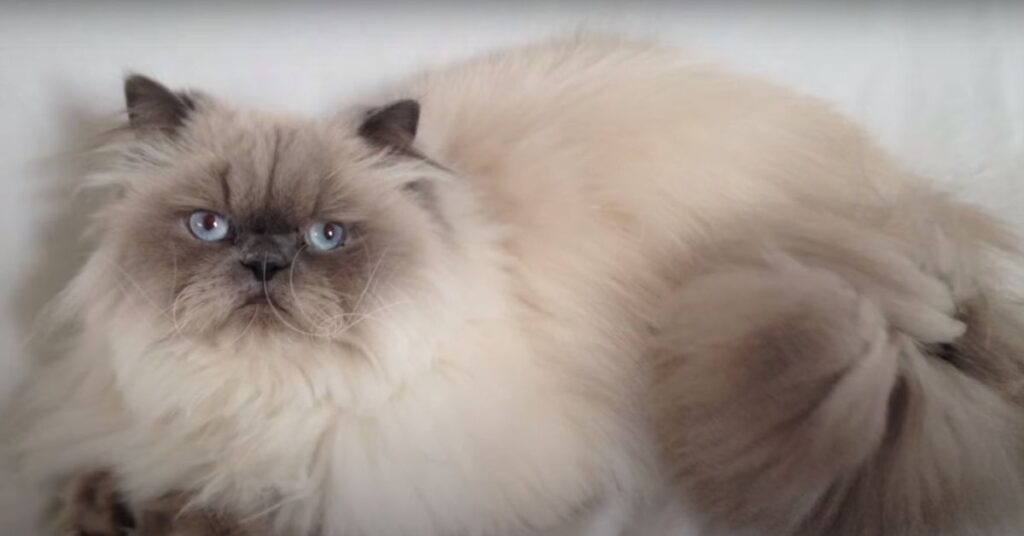
Himalayans are medium-sized-haired and heavy-boned cats. They are very similar to Persians in body structure but their beautiful deep blue eyes make them even more attractive. They are generally friendly with everyone. They will stretch out in front of you, sleep on your bed with you, and sit on your lap if they wish.
They have a long, dense fluffy coat, making them look like a teddy bear. This crossbreed of Persian and Siamese is light white or fawn with dark pointed markings like Siamese on their ears, face, tail, and paws. Their big round eyes, chubby cheeks, flat faces, and small noses make them noticeable.
Colours found in Himalayan cats:
- Chocolate
- Cream
- Lilac
- Blue
- Grey
Himalayan Cat Origin and History
Unlike other cat breeds, the cat’s history is not as old as other cat breeds, dating back less than 100 years. Clyde Keeler and Virginia Cobb began experimental breeding in 1931 and produced the first Himalayan, called Newton’s Debutante. It was then known as the Colorpointed Longhair.
The American Cat Fanciers’ Association (ACFA) and Cat Fanciers’ Association (CFA) recognized it as a Himalayan cat in 1957. Today, many organizations still recognize it as a Persian cat rather than a Himalayan.
Pros and Cons of Himalayan Cat
Pros
1. Friendly with everybody
2. Calm And Gentle
3. Live up to 15 years
4. Easy to care
5. less exercise needed
cons
1. Needs daily grooming
2. Multiple hair issues
3. Uncomfortable with loud children
4. Needs a special diet
5. Shredded a lot
Himalayan cat price
Himalayan cat price varies with the cat’s coat color, gender, body structure, health, and blueline. The average price of a Himalayan cat price in India can be between Rs 25,000 and Rs 50,000 ($300 to $900). Some colors are rarely found in them, which can increase Himalayan cat costs. Often the male Himalayan breed cat price can be higher than that of a female Himalayan.
Himalayan Suitable For:
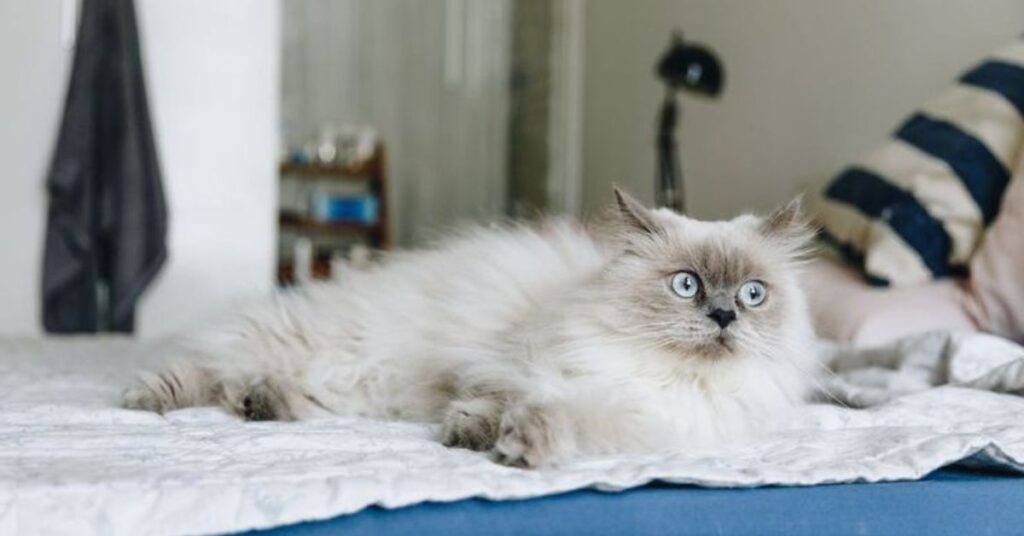
Although Himalayans adjust themselves to the home environment, comparatively, they have low energy levels, so they are comfortable with senior family members. They do not like loud noises, so it may take them some time to settle in a house with loud children. They may have breathing problems in case of excessive heat and humidity. They are relaxed and friendly with other pets. They get along well with dogs if they are introduced carefully for the first time.
Which is better Himalayan or Ragdoll?
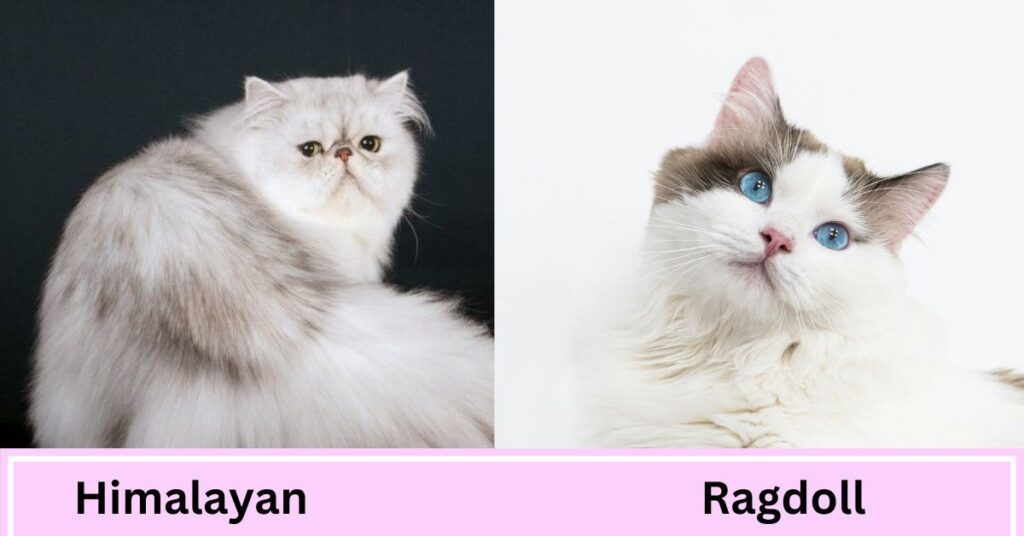
Both are very similar in looks and nature. ragdoll or Himalayan, Both cats are calm and gentle. Both are excellent indoor pets and are friendly with family members and other pets. Ragdoll is more active than Himalayan, so it needs more affection and attention. Both are easily trained due to their intelligence. ragdoll and Himalayan cats can easily live in the Indian environment. After knowing all the factors, it is your choice which of these two beautiful cats you choose as your companion, as both are very popular cat breeds in India.
Which should I prefer male or female cat?

It depends on your requirements. Males are more loving and affectionate while females are more independent and calm. If males are not spayed, they spray urine in the corners of the house and if your male cat goes outdoors, then there can be fights over territory.
Although no scientific research proves that male cats cuddle more and are more affectionate towards their owners, many cat enthusiasts believe this and that is why most of them prefer males.
Conclusion
I hope this explanation of the difference between Himalayan cat vs Ragdoll will help you choose the ideal cat for your home between these two wonderful breeds. Himalayans require more grooming than Ragdoll cats whereas Ragdolls have a higher weight and life span than Himalayans. Both are indoor cats. Both cats make excellent companions due to their gentle and calm behavior. You can choose one according to your budget and their care needs.
Also read: Himalayan Cat Vs Persian Cat Difference Based On Characteristics And Care (With Picture)

I am Saral Kumar, a passionate blogger who dedicates my time to providing valuable information on pet care, especially cats. I create content that helps cat owners to understand their furry friends better and take care of them. I have spent the last decade trying to understand cats better. So I am sharing my valuable insights and tips with my fellow cat enthusiasts through writing.
